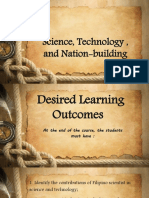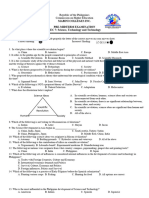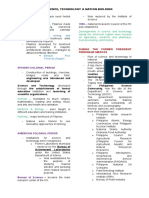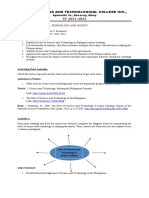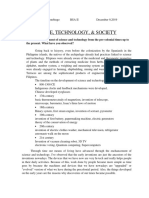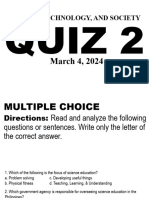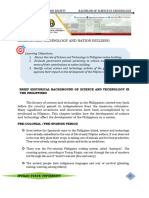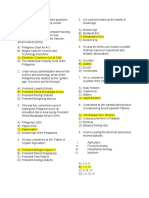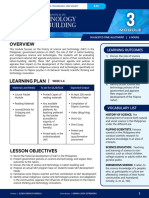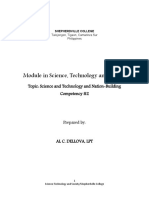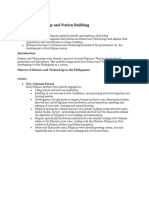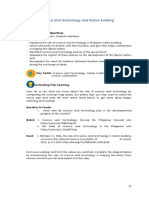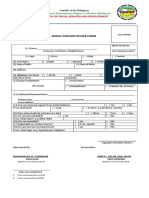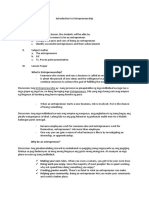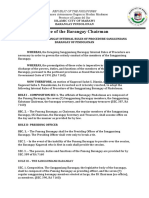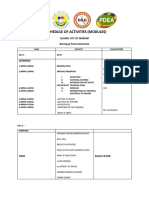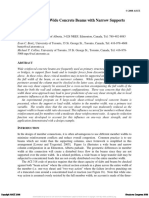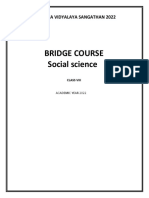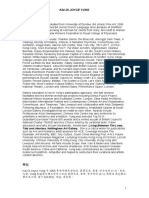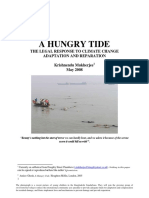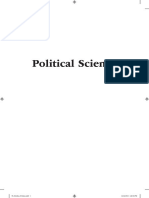0% found this document useful (0 votes)
36 views7 pagesSTS Lesson2 MCQs Updated
The document consists of multiple-choice questions related to the history and development of science and technology in the Philippines, covering topics from pre-colonial practices to modern policies. It highlights the influence of various colonial powers, the evolution of education, and key laws that shaped the scientific landscape. The questions also address the relationship between science, technology, and society, and the role of different institutions in promoting scientific advancement.
Uploaded by
Jazzera MustaphaCopyright
© © All Rights Reserved
We take content rights seriously. If you suspect this is your content, claim it here.
Available Formats
Download as DOCX, PDF, TXT or read online on Scribd
0% found this document useful (0 votes)
36 views7 pagesSTS Lesson2 MCQs Updated
The document consists of multiple-choice questions related to the history and development of science and technology in the Philippines, covering topics from pre-colonial practices to modern policies. It highlights the influence of various colonial powers, the evolution of education, and key laws that shaped the scientific landscape. The questions also address the relationship between science, technology, and society, and the role of different institutions in promoting scientific advancement.
Uploaded by
Jazzera MustaphaCopyright
© © All Rights Reserved
We take content rights seriously. If you suspect this is your content, claim it here.
Available Formats
Download as DOCX, PDF, TXT or read online on Scribd
/ 7





